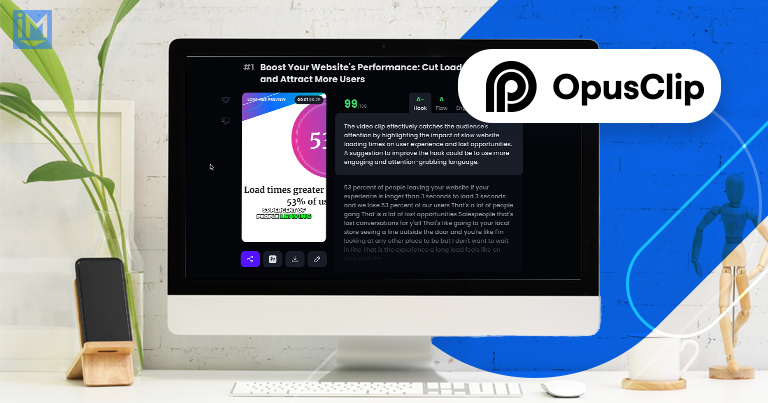One of the most frequent complaints we hear about content marketing is how long it takes to see results.
You write a helpful article, hit publish, and often have to wait several weeks (or even months) before it ranks in search engines and gets found by qualified buyers.
For businesses looking for a quick return from their content, this can be discouraging, leaving many wondering if the wait is worth the effort.
Rest assured, your high quality content will deliver results and is well worth the wait, but that content can also deliver quick wins.
When you salespeople use content with buyers, it can increase close rates and speed up the sales process. When you do this — what we call assignment selling — your content can can have an impact on revenue tomorrow.
Here’s how.
What is assignment selling?
Assignment selling is the act of using content during the sales process to address major objections and questions your buyers have.
The idea was developed by Marcus Sheridan more than a decade ago when he was running his swimming pool company River Pools and Spas.
Marcus was writing a lot of marketing content for his website that was bringing in tons of traffic — and a good number of leads. He wanted to dig through the data to see what conclusions he could draw about his customers.
Marcus realized he had two very different groups of people requesting sales calls — and he was seeing dramatically different close rates depending on which camp someone came from.
- The first group had only viewed a handful of pages on his website. They had a closing rate of around 25%.
- The second group had viewed an average of 30 pages of his website and had a closing rate of around 80%.
In short, the more well-informed the buyer is, the more likely that buyer will close.
Shortly after making this connection, Marcus decided it was in his, his team’s, and even his buyers’ best interest if all potential customers were as educated as possible before they had a sales conversation.
He made it mandatory for any prospect requesting a sales call to review specific pieces of content from the company before the call.
If they wouldn’t review the content, Marcus and his team wouldn’t let them move forward.
As a result, the team had fewer overall calls, but the calls they were having were with more serious, more well-informed buyers. Closing rates and revenue went up. And his sales team wasted less time with unqualified prospects.
Assignment selling benefits you and your buyer
Initially, just like with Marcus, assignment selling may result in fewer sales calls, but in the long run, it’s more beneficial for everyone involved.
For your business, assignment selling can lead to:
- Better informed buyers: Assignment selling allows buyers to be better educated about your business and what you sell, so they have fewer questions and doubts.
- More effective sales conversations: Assignment selling content addresses general questions ahead of time. Since buyers are better informed, sales conversations can focus on each buyer’s specific needs.
- Faster sales process: Less time spent on educating means the sales process can move along more quickly. In other words, deals can close faster — while leads that aren’t a good fit can be disqualified earlier.
- Larger deal size: When you educate, you explain value. Buyers are less likely to choose a cheap option if they understand what they’re paying for.
Meanwhile, for the buyer, assignment selling means:
- They don’t feel like they’re in the dark. Modern buyers want to own more of the buyer’s journey. They want to be able to research products and solutions on their own without having to go through a salesperson. Assignment selling helps them do so.
- They can qualify or disqualify themselves. When you share educational content, buyers are better equipped to figure out if yours is the solution they truly need. When you create and share high-quality, unbiased content, they can decide on their own if you’re the right solution for them.
- Less wasted time in sales meetings. When people are able to self-qualify or disqualify, they (and your business) waste less time in sales meetings that go nowhere. They also ensure their time is better spent on questions and solutions specific to their needs when they do reach out to sales.
3 steps to implement assignment selling
The benefits of assignment selling are substantial, but getting started can be a challenge. Luckily, we’ve got a full free course on that, but here’s what you need to know in a nutshell.
Before step 1. Understand your sales process
Before you can even begin, you (and your company) need to document your sales process. You need to know the natural progression a buyer takes, from initial inquiry to closed deal.
Too often, we see teams where every sales rep has a slightly different process, which gets messy and hectic. Even worse, this creates an uneven experience for buyers.
Without a well-defined process, assignment selling will be more difficult and less effective. A clear sales process is a prerequisite.
1. Create the content your buyers need
For assignment selling to work, you’re going to need the right kinds of content.
Start by mapping out your sales process.
Let’s say your typical sale has three steps:
- Discovery call: in which you get to know the buyers and their needs.
- Proposal call: in which you explain a specific package for each buyer.
- Closing and kickoff: in which you agree to work together.
With those steps laid out, you start to think about the gaps in between each steps — and how you can fill them in with content.
For example, think of what gets asked in every discovery call. Chances are, it’s many of the same questions, asked by buyer after buyer after buyer.
What kind of content would be most useful for that buyer ahead of that call?
As an example, you could create an “80% video” to answer those common questions so the meeting is more productive.
Here’s an example:
Then, you think about the next step, the proposal call. In this case, the buyer might need some help reading and understanding a proposal, so you create a guide to walk them through it.
So on and so forth. For every meeting, for every stage, you decide which content will be most helpful for the buyer.
To really excel, your content needs to be relevant, helpful, thorough, and honest. It needs to answer the key questions most consumers want to know (or should know) before making a purchase.
We’ve found time and time again nearly all people looking to make a major purchase have a few major questions they need answers to:
- How much does it cost?
- Which are the best options?
- How does this option compare to others in its class?
- What are some of the problems with this solution/product?
- Are there reviews of this product/company?
We call these topics The Big 5, and while, they’re not the only questions your buyers will have, they are a good place to start.
Remember, for assignment selling to work, it needs to be a joint effort between marketers and salespeople.
After you’ve mapped out the sales process, ask your sales team to write down the top 25 questions they hear most frequently from prospects. Every one of these questions should get answered in an article, video, or buyer’s guide.
2. Empower your sales team to use the content
Once you’ve created assignment selling content, don’t wait for people to find it on their own through search.
Instead, empower your sales team to start sharing it.
Your sales team can now use this content to save time and help prospects better prepare for sales conversations — or even disqualify themselves.
In our experience, many salespeople would be more than happy to use content in their sales cycle, but often don’t know when or how to.
Marketing should educate sales reps on the different use cases for each piece they create.
Use your revenue team meeting (or another regularly scheduled meeting between sales and marketing owners) to keep sales apprised of what content has been created and explain how they can use it.
For example, assignment selling can be useful after a prospect fills out a form on your website.
After someone fills out a sales call request form, you may be tempted to simply send an automated email that says “Great, here’s the date and time to confirm!”
This is a missed opportunity. Share that video or article you’ve created so they become more educated ahead of the meeting.
3. Make the content easy to access
If your content isn’t easy to find on your website, both your website visitors and your salespeople won’t be able to get the answers they’re looking for.
With this in mind, organize your content so it’s easy to find.
Much of your sales content should be readily available on your website, either from your service pages or in your blog. Some specific information like pricing may even have its own dedicated page.
You can also create a spreadsheet or repository that includes links to the content that has been created.
There are also tools you can use that can help you organize and send out content. Paperflite and Salesreach are two of our favorites.
But won’t assigning content scare buyers away?
One of the biggest objections sales reps have about assignment selling is this: If I assign content, will it make the prospect cancel the sales appointment?
And it’s true:
- Some people might balk at the idea of having to read or view content, but let’s be honest, would those people be likely to become customers anyway? Probably not.
- Others might learn enough to know they’re not a good fit for what you sell. But the sooner you can get these folks out the sales process the better. They, too, were unlikely to become customers. Assignment selling may influence some unfit customers to exit the buying funnel, but that’s a good thing.
Just as Marcus saw the number of sales appointments decline, his closing rates for the remaining sales appointments increased.
That’s because he was only meeting with prospects that had been educated thoroughly on his products and wanted to continue forward.
When you use assignment selling, you help yourself avoid sales appointments that end in a quick disqualification.
Start selling smarter
At its heart, selling is teaching. You help a buyer understand his problem and understand the solutions you sell. The more you can do this with content, the more smoothly that buyer can move through the sales process — or decide he is a bad fit and opt out.
To get started, get a whiteboard and write out your sales process. Find the gaps between the meetings and start thinking about how you can fill those in with content.
If you do this right, you’ll see a higher close rate, a shorter sales cycle, and increase deal size. But it’s not just you who will benefit. Your buyers will feel more well-informed, less pressured, and more trusting of you and your business.
If you want to learn more about assignment selling, check out our free course, “Assignment Selling: Content Is Your Greatest Sales Tool.”















+ There are no comments
Add yours